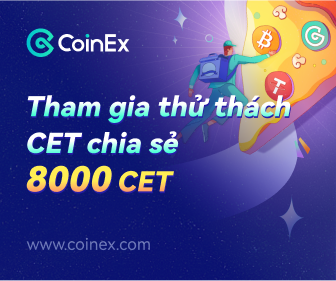
The last decade has proven to be extremely eventful in terms of the adoption and application of blockchain-based technologies all across the world. The rise and mass adoption of cryptocurrencies has been followed by a formation of an ecosystem of digital collectibles, where the benefits of decentralization have rapidly started penetrating the creative fields.
At this exact moment the music industry is experiencing a period of continuous and ongoing innovation, with various communities getting built around the mutual trust in these revolutionizing technologies and a shared belief in a future where an artist, fan and collector are slowly fusing into one.
It is also a very interesting fact that the music industry is lagging behind digital art in terms of NFT and digital collectibles sales volume, but is nevertheless significantly ahead in the process of community building around the technologies in question.
The thing is that we are currently undergoing the process of building web3 (the new internet), which ultimately leads to ideological debates, especially with regards to legacy music business structures. This so-called battle between new innovative approaches and more traditional legacy approaches is subsequently resulting in an unprecedented amount of innovation and ideas, making the music tech industry a very interesting market to follow.
For that reason we wanted to introduce the first-ever State of Things Report, the aim of which is to focus on the projects, trends and processes that are happening within the music3 space, as well as the potential future consequences and considerations.
Stay tuned for Part Two coming next week.
Restructuring of Property Rights
During the last year we have seen an introduction of an innovative concept to embed the right to receive music royalties from an artist’s song as part of the digital collectible’s utility value. The idea that started with platforms such as Royal is now arguably at the forefront of community building within the music metaverse world, with various other startups and projects focusing on fusing monetary relationships between artists and their fan bases.
The fact that many of these NFTs are listed on OpenSea, one of the biggest exchanges, only further strengthens the point. Despite the fact that the concept is very innovative and opens up doors to new interactions between musicians and listeners, it also creates a set of new, previously unencountered problems.
These problems are there because we are actually observing a new type of ownership that obviously brings a totally new set of challenges, especially with respect to property rights and how it reflects within the framework of modern contractualisation. As opposed to a traditional transfer or allocation of music royalty rights, we now have an important distinction between the actual copyright ownership and that of digital blockchain ownership.
The newly introduced concept of digital ownership doesn’t fully correspond to an existing legal framework regarding intellectual property and copyright laws, and as a result there currently is a gray legal area. These developments will surely have substantial implications going on into the future, such as:
Gradual revolution of contractualisation will inevitably happen. At this moment in time we can already see legal disputes between the record labels and big caliber artists, and these disputes arise from the lack of contractual information surrounding NFTs and digital collectibles.
How does revenue from the sale of an NFT get shared between the artist and the label, given that there is a variety of different pre-agreed splits on master recording rights, songwriting rights, publishing rights, syncing rights etc.
Under which category would this particular transfer of rights be classified as? What if an artist is also selling NFTs that grant fans the right to receive royalties from their music? How would that relate to copyright sharing processes of the traditional label – artist relationship?
As can be seen, with a lack of contractualisation the digital blockchain ownership becomes an area with a substantial bunch of potential issues and disputes, and these issues will be progressively addressed during the upcoming future. This relates to both record labels, artists and the platforms themselves and some legislation of this field seems inevitable going forward.
Unsigned/independent artists have an advantage in the short term. As the contractual disputes and resolutions would go on within the big record label world, smaller artists would have more flexibility and less legal friction to issue digital collectibles, especially so if the transfer of royalty rights is in question.
The fact that most often an independent/niche artist would be entitled to 100% ownership of their music makes it a lot easier for them to experiment with different utility values offered to fans. As a result it is safe to assume that the most untraditional and novel innovation will continue to be produced by a more underground and niche sectors of the music world, what can already be seen by the formation of artist-fan communities in more niche genre families.
Education and onboarding will increase as a result of this property rights restructuring. For the platforms and marketplaces within this field the amount of legal complexity is increasing rapidly on a daily basis. Aside from the transfers of rights there also is an existing question of whether NFTs would be classified as financial securities after a passage of reasonable time.
Even though legal experts are divided on this topic, there is surely a commonly agreed notion that regulation will come to this market at a certain point. Whether it will be relatively early into the building process or only after complexity massively increases, it definitely means certain things for the platforms in question.
The most important is the fact that the marketplaces must heavily focus on informative onboarding and education, in order to be able to give a detailed and informative overview of what exactly it is that they are offering. It is vital to clearly communicate to collectors exactly what kind of royalty rights they are potentially receiving and what kind of drawbacks and considerations are there. This suggests that we will see a rise in educational inductions offered by these platforms in the future.
A more long term potential effect of the contractual revolution is the metadata standardization. The viewpoint here is that restructuring and regulation will bring a more transparent reality with more platform interoperability, which in turn would allow the space to have more transparent metadata standards in place. That in turn will make collaboration and discoverability way easier within the digital collectible world. At this exact moment many DAOs are currently pushing for higher metadata standards.
Further Development of Communities
As mentioned previously, one of the biggest appeals of NFTs, DAOs and social tokens is the opportunity to fuse deeper and more intimate connections between music artists and their audiences. The latest survey-based research within this field shows that the majority of DAOs and platforms are heavily focusing on the community building aspect, and are ready to lose money in the short term in order to prioritize the formation of strong communities in the long term.
For instance, a DAO structure allows fans to be directly invested into their favorite artists or into tech projects they believe in, with rewards and incentives enforced by the blockchain. Consequently it leads to the situation where like-minded people united over a shared vision are involved in a horizontal decision making process, which in turn leads to the formation of digital communities.
The world of music-related tokens is going through a period of constant ongoing experimentation as more and more artists are trying to fuse long-term connections with their fans. As a result there are a variety of new types of offerings offered to collectors every day, with a lot of these offerings being of the financial nature.
We are seeing more and more financial connections being made between the artists and the fans through NFTs with embedded royalty rights or DAO structures that allow fans to be part of the artist’s business. This in turn leads to a process where artists, collectors, fans and contributors are all slowly merging into one.
It also has to be stated that we are now in the very early years of the web3 building process and as the adoption and popularity of the technology keeps growing, the innovation and experimentation will also continue to increase – both in terms of types of offerings and types of digital collectibles. The inevitable results of these processes is the further formation and developments of closely-tied digital communities in the music tech world.
Source NFT Plazas



